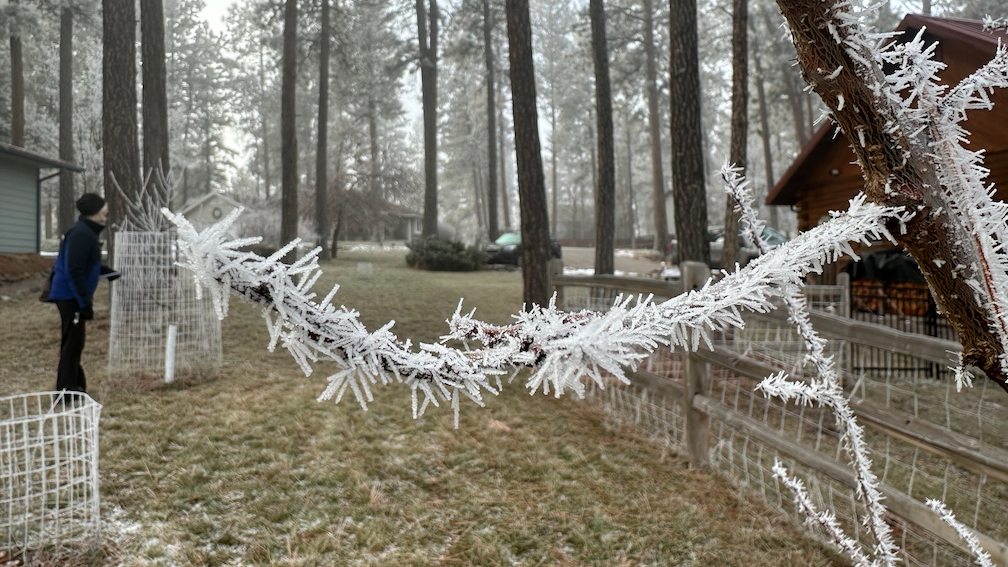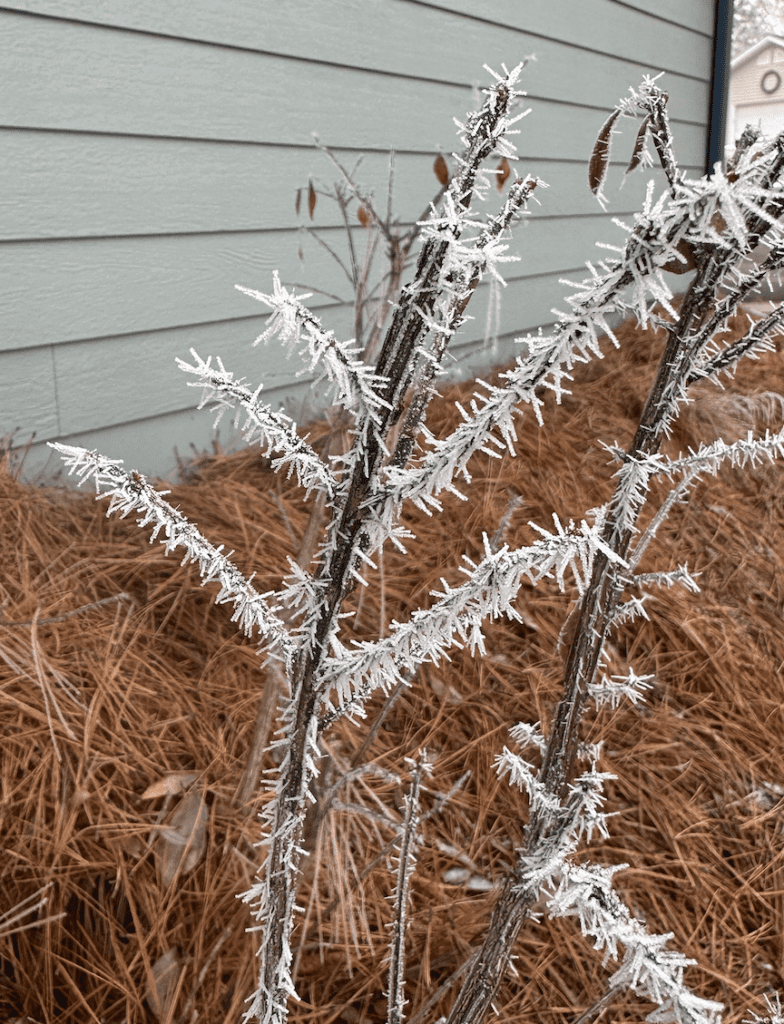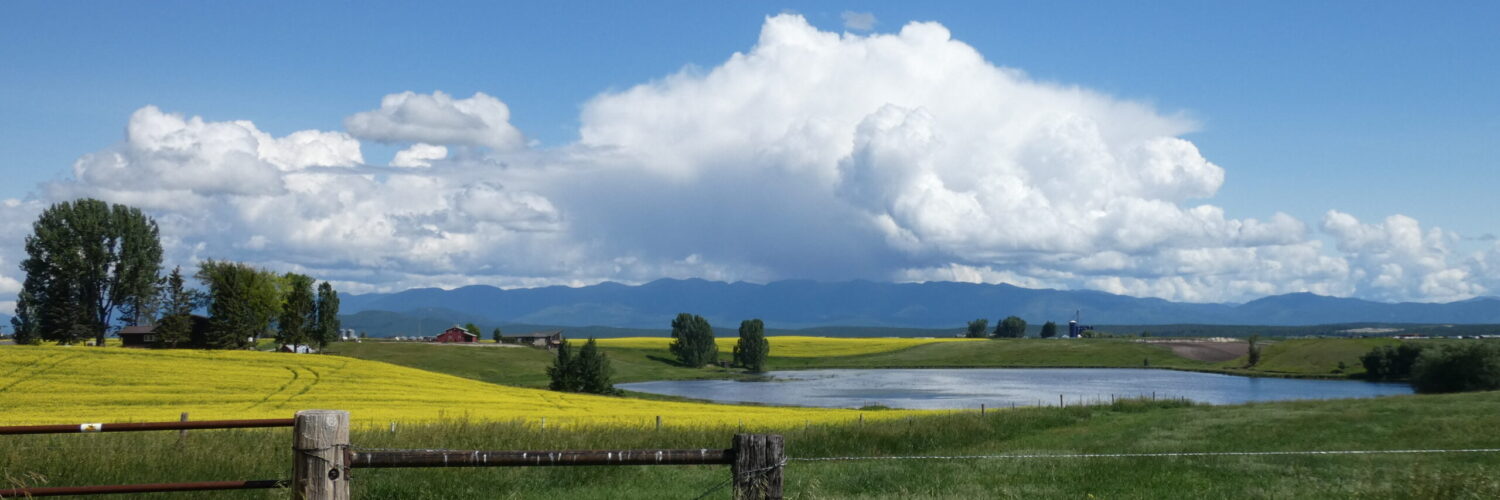by Skip Via
skip@westvalleynaturalists.org
I woke up on December 29, after two days of dense fog, to see everything–leaves, grasses, fencing wire, pine needles–coated in a beautiful layer of hoar frost.

But wait…hoar frost occurs only in very specific conditions: namely cold, clear, and windless nights with low humidity, when the rapid radiant heat loss from surfaces causes water vapor–not liquid water droplets, as in fog–to form delicate, needle-like crystals on those surfaces. The previous two nights had been anything but cloudless with low humidity. You could feel the cold fog droplets on your face when you walked.
But it sure LOOKS like hoar frost. What’s going on here?
In this article from a couple of years ago–Hoar Frost or Rime Ice?–I explained how hoar frost differs from what I was calling rime ice. I was not incorrect about hoar frost, nor about rime ice, but it turns out that there are several other conditions under which frosts can form that look like hoar frost and are NOT rime ice. Doing research on them is complicated by the fact that different agencies use different names to describe different types of frost. The important take-away, however, isn’t what you call it, it’s under what conditions it may form.

This looks like hoar frost, although on closer examination, the crystals are not as delicate as those you would find with hoar frost. This is in fact Rime Frost (a.k.a. white frost, and several other terms). It forms on cold nights on cold surfaces when water droplets–either from fog or from high humidity–freeze to the surface, forming crystals that resemble hoar frost. This example formed when there was apparently little wind, as the crystals evenly coat all sides of the branches.

This is also rime frost, and it occurred on the same days and under the same conditions that formed the crystals in the image just above this one, but the conditions in this location (at the edge of an open field near a lake) included more wind, causing the crystals to form along the leeward side of the surfaces. The crystals are also thicker, probably as a result of more moisture being blown across the surfaces by the wind. Wikipedia refers to this as advection frost.

For reference, this appears to be true hoar frost. (This image is from the Hoar Frost or Rime Ice? article mentioned above.) The crystals are much more delicate and needle-like.

This image from the same article, which I identified as rime ice, is actually more likely to be rime frost that has built up over time. True hoar frost does not build up over successive days. The crystals are too delicate to support the weight and will break off easily. Gentle breezes can also dislodge them.
So, in true confession mode, I probably misidentified several images from Hoar Frost or Rime Ice?, erring mostly in mislabeling rime frost as rime ice. Most of the substance covering surfaces in West Valley, given our generally cloudy and sometime windy nights, is probably rime frost. It could also be rime ice, which occurs when there is a dense buildup of ice from fog or other atmospheric moisture, including, sadly, car exhaust.
Completely irrelevant to this discussion, but still worth noting for its stunning beauty, is the phenomenon of Window Frost, also called fern frost or ice flowers. Fern frost (my preferred term for its alliterative poetry) forms on glass surfaces when the weather is very cold outside and there is relatively warm and humid (but not too humid) air on the other side that may leak out. Irregularities in the outer glass surface cause the frost to form delicate fractal patterns as seen below. It was a regular occurrence on our windows on very cold nights when we lived in Fairbanks, Alaska, where I took this photo. (And probably several hundred more.)

